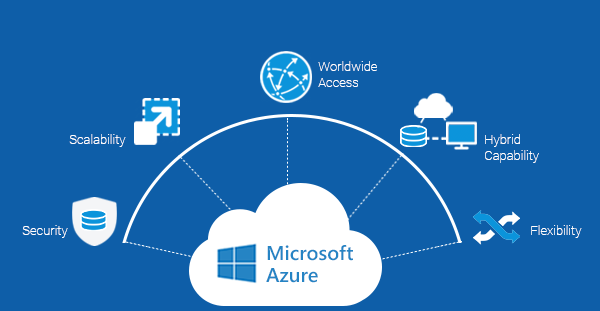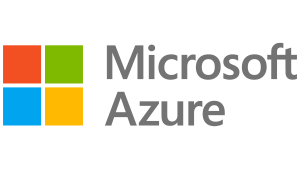Azure Cloud Backup
Protect and restore your data in the Microsoft cloud!
Protect and restore your data in the Microsoft cloud!
In This Article
Why use Azure Backup?
How Azure Backup protects from ransomware?
What can I back up?
- On-premises – Back up files, folders, system state using the Microsoft Azure Recovery Services (MARS) agent. Or use the DPM or Azure Backup Server (MABS) agent to protect on-premises VMs (Hyper-V and VMware) and other on-premises workloads
- Azure VMs – Back up entire Windows/Linux VMs (using backup extensions) or back up files, folders, and system state using the MARS agent.
- Azure Managed Disks – Back up Azure Managed Disks
- Azure Files shares – Back up Azure File shares to a storage account
- SQL Server in Azure VMs – Back up SQL Server databases running on Azure VMs
- SAP HANA databases in Azure VMs – Backup SAP HANA databases running on Azure VMs
- Azure Database for PostgreSQL servers – Back up Azure PostgreSQL databases and retain the backups for up to 10 years
- Azure Blobs – Overview of operational backup for Azure Blobs
Application consistency
Back up and restore data from virtual machines with application consistency in Windows using Volume Shadow Copy Service (VSS) and in Linux with pre- and post- processing scripts.
Multiple-workload support
Back up Azure Virtual Machines, on-premises servers, SQL Server and SAP HANA on Azure Virtual Machines, Azure Files, and Azure Database for PostgreSQL.
Durable storage options
Store backups in locally redundant storage (LRS), geo-redundant storage (GRS), and zone-redundant storage (ZRS).
Why use Azure Backup
Azure Backup is a cost-effective, secure, one-click backup solution that’s scalable based on your backup storage needs. The centralized management interface makes it easy to define backup policies and protect a wide range of enterprise workloads, including Azure Virtual Machines, SQL and SAP databases, and Azure file shares.
Keep data secure
Azure Backup provides solutions for securing data in transit and at rest.It also prevent accidental data loss by retaining backups for 14 days after deletion with soft delete.
Scale easily
It uses the underlying power and unlimited scale of the Azure cloud to deliver high-availability with no maintenance or monitoring overhead.
Get unlimited data transfer
Outbound data refers to data transferred from a Recovery Services vault during a restore operation.If you perform an offline initial backup using the Azure Import/Export service to import large amounts of data.

Still not convinced?
Many more reasons:
- Offload on-premises backup: Azure Backup offers a simple solution for backing up your on-premises resources to the cloud. Get short and long-term backup without the need to deploy complex on-premises backup solutions.
- Back up Azure IaaS VMs: Azure Backup provides independent and isolated backups to guard against accidental destruction of original data. Backups are stored in a Recovery Services vault with built-in management of recovery points. Configuration and scalability are simple, backups are optimized, and you can easily restore as needed.
- Centralized monitoring and management: Azure Backup provides built-in monitoring and alerting capabilities in a Recovery Services vault. These capabilities are available without any additional management infrastructure. You can also increase the scale of your monitoring and reporting by using Azure Monitor.
- Get app-consistent backups: An application-consistent backup means a recovery point has all required data to restore the backup copy. Azure Backup provides application-consistent backups, which ensure additional fixes aren’t required to restore the data. Restoring application-consistent data reduces the restoration time, allowing you to quickly return to a running state.
- Retain short and long-term data: You can use Recovery Services vaults for short-term and long-term data retention.
- Automatic storage management – Hybrid environments often require heterogeneous storage – some on-premises and some in the cloud. With Azure Backup, there’s no cost for using on-premises storage devices. Azure Backup automatically allocates and manages backup storage, and it uses a pay-as-you-use model. So you only pay for the storage you consume. Learn more about pricing.
- Multiple storage options – Azure Backup offers three types of replication to keep your storage/data highly available.
- Locally redundant storage (LRS) replicates your data three times (it creates three copies of your data) in a storage scale unit in a datacenter. All copies of the data exist within the same region. LRS is a low-cost option for protecting your data from local hardware failures.
- Geo-redundant storage (GRS) is the default and recommended replication option. GRS replicates your data to a secondary region (hundreds of miles away from the primary location of the source data). GRS costs more than LRS, but GRS provides a higher level of durability for your data, even if there’s a regional outage.
- Zone-redundant storage (ZRS) replicates your data in availability zones, guaranteeing data residency and resiliency in the same region. ZRS has no downtime. So your critical workloads that require data residency, and must have no downtime, can be backed up in ZRS.

Provides extra layer of data protection
Cloud backup creates a backup of all the files stored by the organisation, which files are stored in a remote location.
It is easy, accessible, up to date and reliable
Executing the backup does not require an additional time commitment from you or your customer. Computer files are backed up continuously.
It is automated
You select what you want to backup and when you want to run your backup, and the cloud takes care of the rest.
How Azure Backup protects from ransomware?
Azure Backup helps protect your critical business systems and backup data against a ransomware attack by implementing preventive measures and providing tools that protect your organization from every step that attackers take to infiltrate your systems. It provides security to your backup environment, both when your data is in transit and at rest.
In addition to various security features offered by default, you can also leverage several enhanced features that can provide you with the highest levels of security for your backed-up data. Learn more about security in Azure Backup. Also, learn about how backups can help you protect backups against ransomware better and how Azure helps you ensure rapid recovery.
$5 / month
Level 1 Plan
- Instance under 50GB
- Ένα δωρεάν εισιτήριο ανά ειδική έκθεση
- Δυο κάρτες επισκεπτών μιας χρήσης ανά έτος
$10 / month
Level 2 Plan
- Instance between 51-500GB
- Τέσσερα δωρεάν εισιτήρια ανά ειδική έκθεση
- Τέσσερις κάρτες επισκεπτών μιας χρήσης ανά έτος
$10 / month for each 500GB increment
Take your business to the next level.
Level 3 Plan
- Instance over 500GB
- Πέντε δωρεάν εισιτήρια ανά ειδική έκθεση
- Έξι κάρτες επισκεπτών μιας χρήσης ανά έτος
The following table shows a few typical examples and the monthly cost of backup on Azure.

Contact us
Συμπληρώστε την φόρμα και θα επικοινωνήσουμε μαζί σας.

